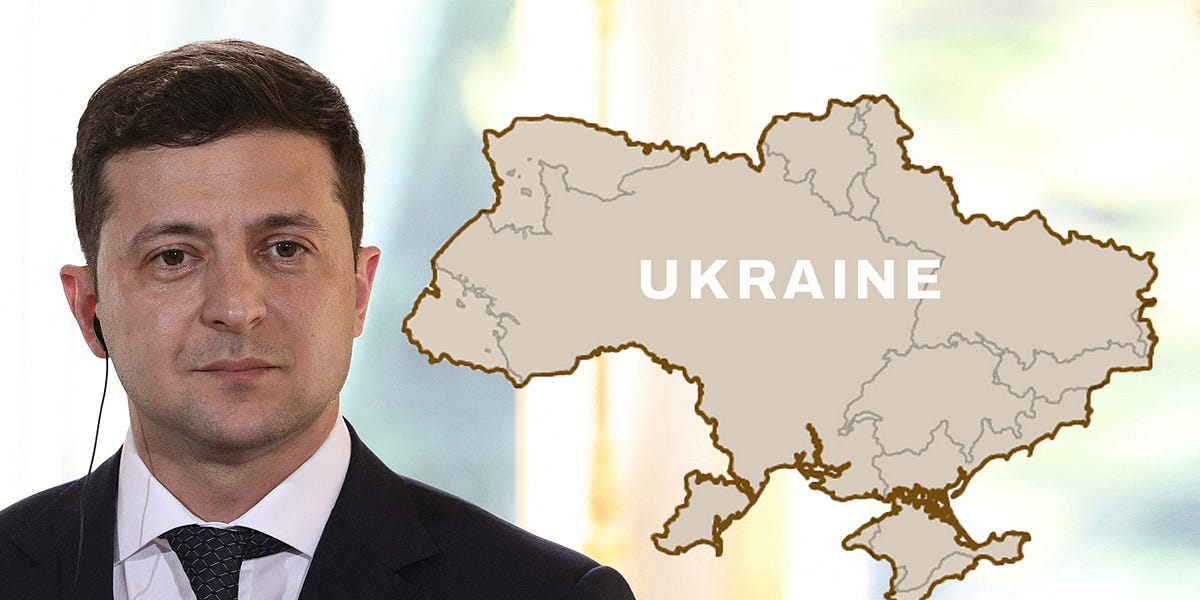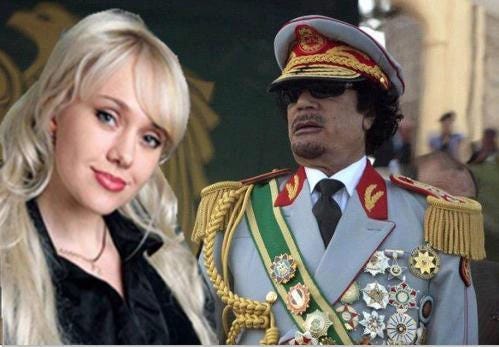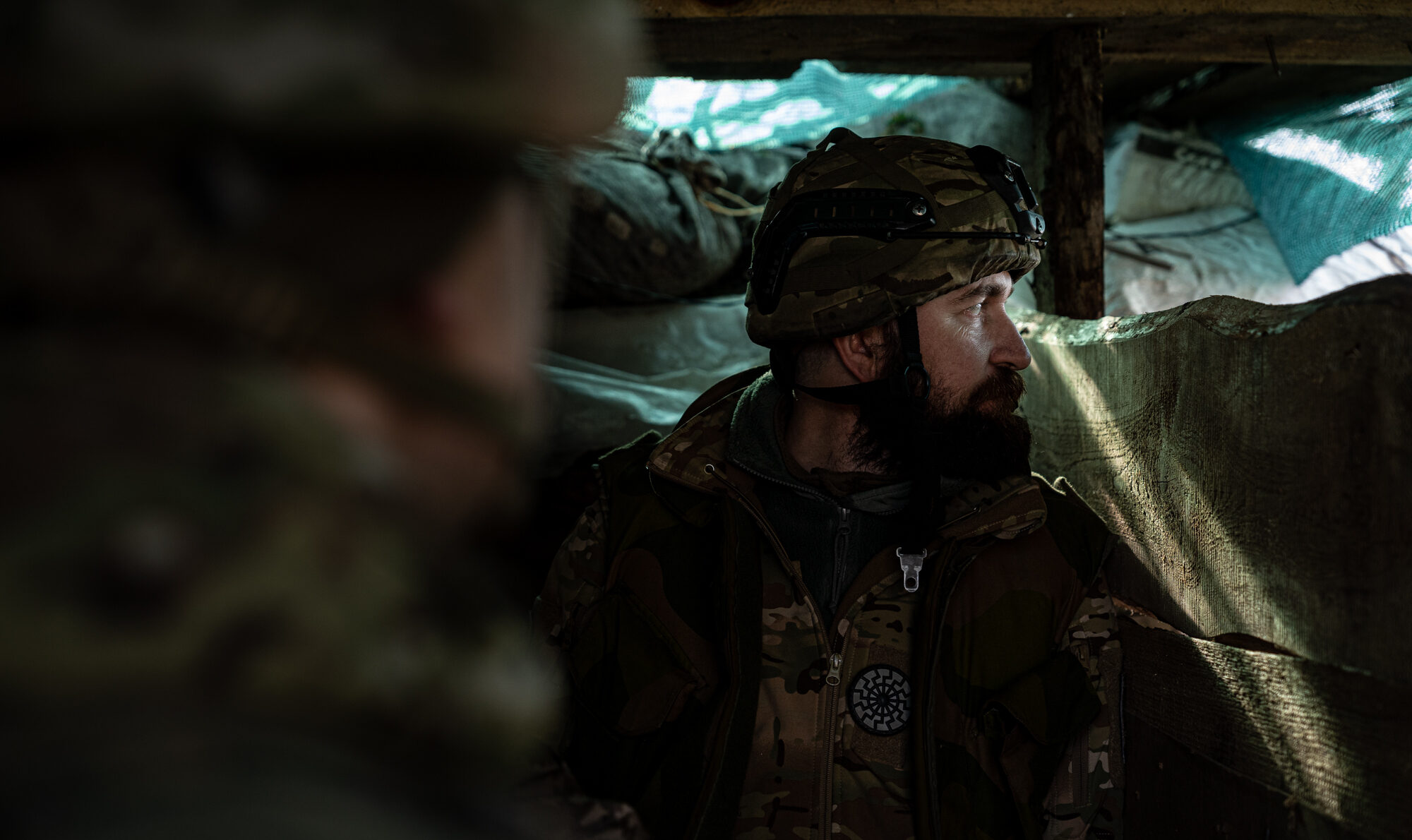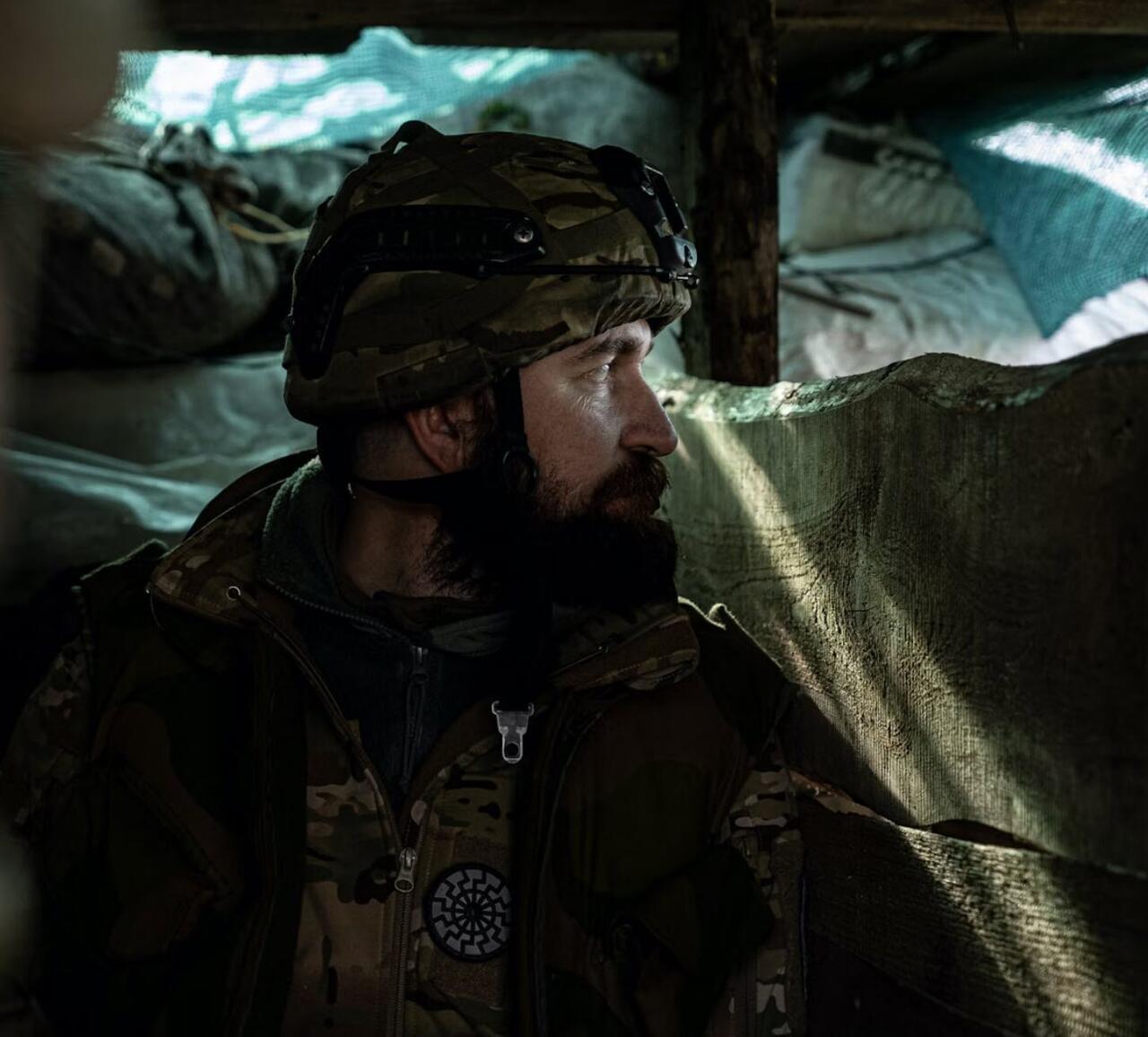The dispossession of human and mineral in the service of Monsanto-Bayer

moneycircus.substack.com
Eurasia note #77 - Ukraine: The War Everyone Saw Coming
The dispossession of human and mineral in the service of Mammon
MAY 5, 2023
- Drones sanitise bloodshed, mixing video games with reality television
- On the ground, women shield their menfolk from the draft
- The media that doesn’t fight beats the drum for another offensive
- European leaders admit that since 2014 they made a pretence of peace
- U.S. Congress resolution would make victory over Russia integral to foreign policy
- Whom do they serve but finance capital that eyes Ukraine’s resources?
- Corporations had primed the media on the need to “open up” Ukraine
- We witness a more brazen version of the provocation and subversion of Germany
- Do we need to restate that the same investors own the banks, military and media?
- President Zelenskiy flees Ukraine prior to fireworks above the Kremlin
- Russia responds with attacks on Kyiv, Odesa and Zaporizhzhia
- Are the dice loaded or do they tumble where they may?
See Part Two:
Eurasia note #78 – Churchill’s Wars And Financial Ties (May 18, 2023)
(About 2,900 words or 14 minutes of your company. Why not search the broad range of topics on Moneycircus Substack? — click top left on the MC logo, scroll down to the second magnifying glass.)
Salesman in chief
Tbilisi, May 5, 2023
There are two wars being fought: one online, one on the ground.
The very public use of drones lends itself to this phenomenon; camera footage is tailor-made for propaganda. Yet this also leads to a knee-jerk response, as we witness this week when two remote control devices detonated over the Kremlin.
Even mainstream commentators criticised the Institute for The Study of War for its opinion that Russia had staged the attack on its seat of government, just days before the annual Victory Day celebrations in Red Square, this year marking roughly eight decades since the Soviet Union defeated fascism. [1]
The institute is run by the neoconservative Kagan family, which includes Deputy Secretary of State Victoria Nuland, who is married to Robert Kagan.
ASPI International Cyber Policy Centre’s Nathan Ruser commented on Twitter:
“OK, ISW is becoming a major problem in the media ecosystem. This assessment is just a hunch from their mapping team (one that I disagree with), and yet their role in providing maps will see this (bad) opinion laundered as fact by many journalists who print what they say verbatim.”
At least this time the Atlantic Council-funded “digital sleuths” Bellingcat(s), did not leap up from their basket to announce they’d identified the Kremlin!
Last month Bellingcat claimed to have pinpointed National Guardsman Jack Teixeira as the source of high-level documents leaked about the state of Ukraine’s readiness for its spring, now summer, offensive.
This obscured the fact that the content was not a surprise, rather it was a challenge to the narrative that Ukraine is winning. Such summaries are prepared for the rank of someone in the stratosphere of the Director of National Intelligence. The state corporate media used Bellingcat to suggest it was an insubordinate leak rather than infighting within the U.S. defence establishment over the wisdom of fighting a proxy war with Russia.
The deep state has doubled down. President Bill Clinton says he knew back in 2011 it was “just a matter of time” before president Vladimir Putin would attack Ukraine — this from the power couple who dismantled Yugoslavia and Libya.
The narratives are central to the mythos of NATO. Long before Russia was reinvented as the bogeyman, NATO needed an alternative to the spectre of the Soviet Union. This was provided in the form of R2P, or responsibility to protect – the idea that NATO was no longer the arm of an imperial hegemon but humanitarian. Bad guys must be identified and removed, in order to safeguard some minority of whose existence, until the day before yesterday, we knew nothing. The fact that these bad guys all seemed to sit atop oil wells was just a coincidence.
If these outrages are still too strong a cup — a vessel from which even some in the alt media decline to partake — then skip the next paragraph.
The evidence is incontrovertible. In both cases leaders were defamed and murdered, and their nations rent asunder: the Federal Republic of Yugoslavia and its leader
Slobodan Milošević, and Libya under
Muammar Gaddafi. Even
The Guardian was driven to admit,
Milosevic: 'no link to genocide found', though to this day state-controlled Radio Free Europe still quibbles:
Milosevic 'Exonerated'? War-Crime Deniers Feed Receptive Audience.
Like the conquest of those territories, former U.S. Secretary of State Hillary Clinton made clear the proxy nature of the present conflict, in a joint appearance with the former president: Ukraine must defeat Russia or retake lands in Crimea and Donbas. “They need leverage… I wouldn’t trust him [Putin] at a negotiating table under any circumstances, unless Ukrainians, backed by us, have enough leverage.”
Money for…
The U.S. has sent $100 billion to Ukraine, while the media stokes expectations of a Ukrainian counterstrike, with estimates of 48,000, perhaps 60,000, even as many as 200,000 fresh and rested troops. Of course, this feeds into the online narrative, providing cheer to those who have taken a side.
It does not accord with images of press gangs roaming Ukrainian towns. If Armed Forces of Ukraine had such troop numbers then snatch squads would not be seizing men in nightclubs, grandfathers from markets and boys off the street.
One face of the parallel reality online are the women soldiers. Remember how the press claimed that
Gaddafi was protected by crack squad of Ukrainian female bodyguards? But that was ridicule: now images of Ukrainian Amazons are presented as the Marvel team against Russia.
Evgeniya Emerald is a sniper. We don’t see her in action, but even if she’s a model we wish her to stay safe and live long. As for the foreign volunteers, transgender American journalist Sarah Ashton-Cirillo has also signed up.
The reality of many Ukrainian women is different. They swarm the military recruiter press gangs, giving their menfolk time to escape. Mothers refuse to get out of their cars, lock doors, seeking to protect their teenage sons in the back seat.
What mother would want war? The press wants war and that’s a parallel with 100 years ago, when it was pushing for another war with Germany.
Shills of The Hill
There is legislation in Congress that would make Ukraine’s victory over Russia integral to U.S. military policy.
The Ukraine Victory Resolution should more accurately be named the bill to “Fight to the Last Ukrainian.”
It affirms that it is the policy of the United States to see Ukraine victorious against Russia, holds that victory must be followed by integrating Ukraine into NATO, and declares that the United States must extract reparations, the cost of reconstruction, justice for Russian war crimes, and accountability for Russian leaders. [2]
Rep. Joe Wilson (South Carolina, R) and Rep. Steve Cohen (Tennessee, D) introduced the resolution (effectively the same as a bill). Sen Lindsay Graham is, not surprisingly, among its sponsors.
They argue that the United States can settle for nothing less than complete Ukrainian victory, plus the country’s integration into NATO — one of the issues that effectively provoked the war back in 2014 — as a message to “autocrats that borders cannot be changed by force alone.”
“Ukrainian victory is good for U.S. national security and economic stability, denies Putin any reward for its invasion, and deters China and Iran,” it states.
It would prosecute Russians for crimes against humanity and rebuild Ukraine at Russia’s expense. Does anyone hear the echo of the Treaty of Versailles, the crippling reparations it imposed on Germany, the press that would clamour for a second war, the bankers and weapons dealers who, having profited from the first, drooled for another?
More analytically, does anyone listen to the ample voices that caution against making the same mistake?
Provokatsiya
There can be no doubt that the war was provoked. Former German chancellor Angela Merkel admitted so in two interviews, with
Der Spiegel and Die Zeit, in Dec 2022.
The Minsk protocol, brokered by Germany and France, supposedly aimed to reach peace between those who seized power in a coup in Kyiv in 2014, and those who rejected the outcome, primarily among the native Russian population of Donbas.
Merkel admitted that the timetable for negotiations, from the German, French and Ukrainian side was a sham, and that Minsk was just “an attempt to give Ukraine time… to become stronger” — in other words, not to reduce the bloodshed in the east of Ukraine but to increase it.
As Patrick Lawrence wrote for
Consortium News, it’s hard not to agree that Germany did not become a new nation after World War II, facing both east and west, but a wholly-owned subsidiary of the U.S.:
“… its former chancellor told Germany’s leading news magazine and one of its leading dailies that the fruitful ambiguity of the nation’s past is gone now in favor of the manipulative, Russophobic dishonesty that lies at the heart of the proxy war the U.S. now wages against Russia in Ukraine.” [3]
This view is widely held: by the political strategist John Mearsheimer among others, who warned against “the false promise of liberal hegemony”; by the journalist and politician Patrick Buchanan; and by historians who rightly push for a revision of the comforting tales empires tell themselves about their own exceptional virtue.
Mearsheimer’s lecture of 2015 has gone viral — “The West is leading Ukraine down the primrose path and the end result is that Ukraine is going to get wrecked.” Yet it was not exactly prophetic: Kyiv had been at war for a year already with its Russian-speaking citizens in the Donbas: 14,000 would die before Moscow intervened. [4]
His point was that nothing would be achieved by pushing Ukraine to join NATO except for more bloodshed. He called for building up Ukraine economically, as a neutral state.
Instead we see president Volodymyr Zelenskiy in talks with Halliburton, Chevron and Exxon to open up oil and gas fields to U.S. corporations [5].
Share
The biggest companies in agriculture, Monsanto, Cargill and Dupont are investing in corporations that lease farmland, expanding their presence in the local seed market, and introducing GMOs —despite the misdirection of fact checkers, these companies do not need to own Ukraine’s land in order to profit. [6]
President Zelenskiy also has agreed with Larry Fink, CEO of big-three asset manager BlackRock — the driving force behind corporate Wokism, net zero carbon, and ESGs — to coordinate investment in Ukraine.
They spoke of “the efforts of all potential investors and participants in the reconstruction of our country, channeling investment into the most relevant and impactful sectors of the Ukrainian economy.” [7]
Reading the names of the corporations just listed, does it sound like the aim is to help the people, or help themselves?
We are all at war
Are politicians like Bill Clinton, Hillary Clinton, the German Greens, the Poles or the ever-rotating premiership of the United Kingdom pushing for the material benefit of the Ukrainian people, let alone their right to enjoy liberty and the pursuit of happiness — when Russian-speaking Ukrainians have been shelled for nine years?
Or is the reality more prosaic, even banal. Ukraine has mineral resources and rich farmland… and we are in the midst of a land grab that’s worldwide. An entitled coterie of European monarchs and aristocrats, advised by globalist financiers, is demanding the complicity of other nations, including China, in acquiring farmland around the world — mostly buying it at inflated prices in devalued currency, but in the case of the Netherlands by expropriating farmers, in the American Midwest by inexplicable fires, train derailments and poisonings, and in Ukraine through the redistributive force of war.
Some choose to ignore this land grab, chalking it up to climate change, equity and an antagonistic attitude to business, innovation and energy — even while they clutch their new iPhones.
Others see where smart cities will lead — regardless of the claimed motive or end goal.
German member of the European Parliament Christine Anderson explained the objective of 15-minute cities in the simplest terms possible.
How else to make sense of the kaleidoscope of events? We shan’t deign to explain: those who know, know.
First we take Manhattan…
Long before president Putin retook Crimea, Western corporations had expressed their desire to take Ukraine — but they needed a mechanism. The Swiss Army Knife was the intergovernmental institutions such as the World Bank and the International Monetary Fund (IMF) as in so many cases.
In 2014, shortly before Ukraine’s then president Viktor Yanukovych was ousted in a coup, he had declined an EU association agreement, the crucial element of which was a $17 billion loan from the IMF. [8]
It was not a matter of looking west or east, choosing Europe or Russia, but the straitjacket of the IMF loan that worried Yanukovych’s team. Regular readers will be familiar with professor Richard Werner’s book
Princes Of The Yen (2003) in which he describes how the international financial institutions, the IMF and the World Bank, operate as Trojan horses for Western finance capital.
Their perennial demand is that governments follow a neoliberal agenda, removing restrictions that hinder the freedom of corporations and investors .
The New York Times. admitted in May 2014, as the Maidan protests were being prepared, that:
“Western interests are pushing for change… Big multinationals have expressed tentative interest in Ukrainian agriculture, but they have largely remained on the sidelines, unwilling to invest in an industry hampered by structural deficiencies and, more recently, the uncertainty with its eastern neighbor.”
Those multinationals would not tolerate state regulations that specify crop rotation; they complained of land “not fully cultivated… The country’s yield per hectare of grain is about half that of the United States, according to the World Bank.” The sale of farmland being restricted, they complained that fields remained cut up “like chessboards.” [9]
You hardly need to read between the lines to see the call for more fertilizer, high yielding seeds, the consolidation of farms, and the replacement of the patchwork fields owned by Ukrainian families by corporations.
Dr. Natalia Mamonova, Research Fellow at the Russia and Eurasia Programme, Swedish Institute of International Affairs, wrote in 2019 that the collapse of the Soviet Union had left collective farms partly abandoned. Since the turn of this century, large agricultural corporations — Big Ag — succeeded in putting much land back into production, and reduced rural poverty in Ukraine from almost 75 per cent, to 20 per cent by 2010. However these corporations also have deleterious effects:
“Their activities do not directly lead to the dispossession of smallholders from their land, but imply gaining corporate control over the land and associated resources, state subsidies, and agricultural value chain. In such circumstances, rural households are unable to develop beyond the subsistence-oriented production and to become commercial family farmers.” [10]
Then we take Berlin
There is a greater historical resonance: Germany has been here before as Angela Merkel and current chancellor Olaf Scholz should know well.
There is a tendency, especially in the U.S. to give more importance to intentions rather than reality, says the historian Mark Weber. We judge people by their noble-sounding rhetoric rather than what they do. Secondly there is an assumption that there are good guys and bad guys, and if only if everybody was of goodwill there would be no conflict.
Countries should instead make policy based on a realistic assessment of the relationship of power in the world and not on an exaggerated view of their own righteousness. There are interests, and interests clash.
The Tragedy of Great Power Politics, as Mearsheimer entitled his 2001 book, is that nations cannot know how much power is enough to defend their interests.
This built-in tendency to over-react is more dangerous when powers misread the intentions of others — or rather, ascribe motives for which they have no evidence beyond projecting their own.
If a journalist and analyst should steer clear of imputing motive, how much more dangerous is that tendency in a politician or a military strategist?
Yet there are those who make wars happen — usually a minority of politicians, amplified by the press — and here is our parallel with a century ago.
Britain, for example, has a longstanding policy of maintaining the balance of power by opposing whoever aspired to be dominant, yet Buchanan argues that that policy was outmoded even by 1914.
Germany had consolidated in the 1800s, thanks in part to the efforts of Napoleon Bonaparte who, by picking off smaller German principalities, had unexpectedly driven the process of national consolidation. By 1870 the German state was a fact: by the turn of the century its population was approaching 60 million, compared to Britain’s 40 million. The speed of industrialisation was startling: in the decade spanning 1900, German machine building doubled. In 1870 Britain had produced twice as much steel as Germany. By 1914 the position was reversed. [11]
It is was no longer a question of stopping a rival. The consequences of any war with Germany would be ruinous to Britain, Buchanan argues, especially over a historic territorial dispute between Poland and Germany, in which Britain had nothing at stake, let alone any reason to offer perilous commitments.
So who were those making war happen regardless?
We watched as former British foreign secretary and prime minister Boris Johnson scuttled like an albino beetle between the Italian palazzo of the Russian emigre Lebedev family and a photo opportunity on the streets of Kyiv.



















